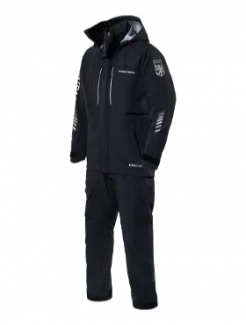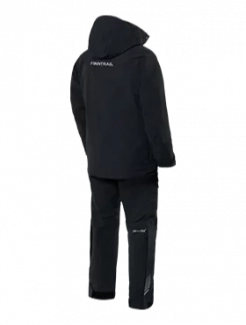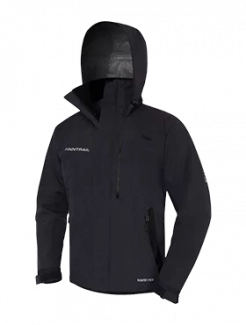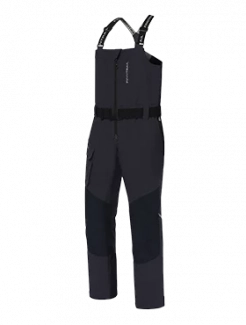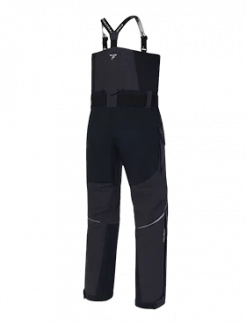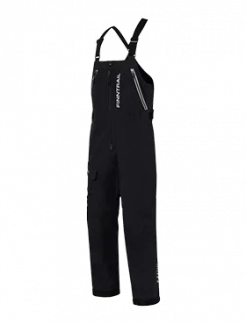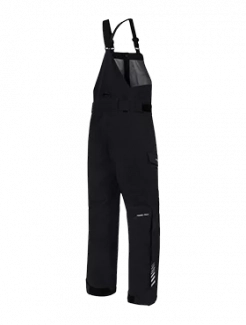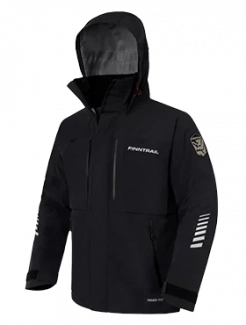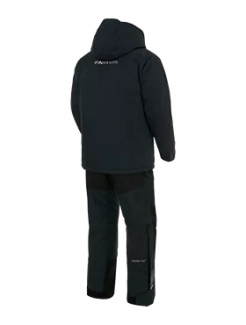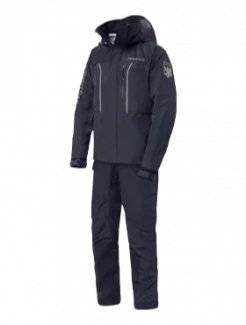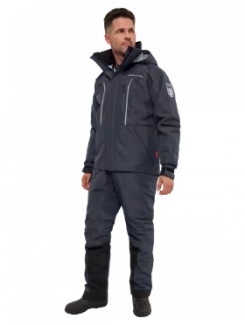Finding Wade Fishing Hotspots in the City
Finding the best fishing spots is usually an engaging challenge. Experienced anglers admit that most of the water teeming with fish they discovered never showed up in any guidebooks or online forums. They were tucked away from city dwellers, often unnoticed by anyone typing “how to find fishing spots near me” into a search bar. That’s why a bit of theory and quality research is needed for a productive day on the water. The edge of storm drainage, small cold dark pockets of a river, current seams — these are just a few examples where you can find spawning grounds. Urban wade fishing is not only about fishing itself; it is about discovering the unnoticed, the hidden places full of fish, and keeping quiet about their locations.

What is Urban Wade Fishing?
Before asking yourself how to find local fishing spots, let’s first define what urban wade fishing is.
Urban wade fishing is the art of chasing fish in the city. It does not require traveling long distances out of town or using any boat or kayak to fish from. Wade fishing is all about being on foot in the water. In some cases, a boat can help you access those hidden, hard-to-reach areas. To start wade fishing, you do not need much equipment; you can start with basic gear like wading boots, various lures, and a fishing rod and reel setup. It’s not about showing off the gear or fancy equipment and clothing; it’s a real hunt where anglers are searching for schools of fish lying in the water.
Although city water may look muddy and stained, it does not mean there are no fish inside it. On the contrary, they love swimming in underwater tunnels, mazes, and other city structures. Even the places where you walk by every day may be full of fish.
A Guide on How to Find Good Fishing Spots
How to Find Fishing Spots on Google Maps?
You don’t need to spend hours walking through every urban creek looking for shadows in water. By doing so, you might lose your precious time and enthusiasm for fishing, and it is simply impossible to check every bend or pocket of the river, even in a small town. But Google Maps can save you from all this effort.
So, how do you find good fishing spots on Google Maps? First, open Google Maps and switch to satellite view. Looking at the map from a bird’s eye view reveals a lot about the river or lake. The funnels, shadows, and any abnormalities might hide new honey holes. Let’s take a deep dive into the Google Maps reading.
1. Looking for “structure”
Fish are curious creatures. They don’t just float around for fun; instead, they love exploring different water anomalies like drainage pipes, logs, bass boats, or tree roots. The good news is that you can find these distinct places on maps. For example, bridges might be successful spots if you’re targeting bass, as they love hiding in shadowy areas. Storm drains are also great fishing holes because water is cooler, attracting fish on hot days. Who knows, maybe there is a big largemouth swimming beneath that overpass?
2. Reading terrain and water color
The next tip is about noticing the difference in water colors. Switch to terrain view mode in Google Maps, and then, you will see it. Light-colored blue or bluish water shows shallows, which might be good to explore during spring spawning. Whereas darker waters mean deeper levels, where bigger fish may stay during summer heat waves.
If you want to find a good fishing spot, look for places where faster and slower currents meet. This is a favorite spot for predator fish like bass or perch, which conserve energy by staying in slower currents while watching for prey swimming in faster currents. This strategy can reward you with a big catch. Many seasoned anglers know this trick - you'll often see them positioned where a narrow creek flows into a bigger river, waiting for fish to ambush their prey. To spot such locations on Google Maps, pay attention to zones where one side appears darker and the other side is rippled.
3. Tracking creeks and backwaters
The most overlooked spots in urban wade fishing are twisting creeks and backwater arms. These are almost impossible to spot offline, but Google Maps can greatly simplify the process. When you open the maps, you can see many сreek arms that resemble veins on the map. The smart move here is to explore each small tributary for signs of fish.
If you’re wondering how to find new fishing spots, scout backwaters for spawning activities during springtime. Largemouth bass, sunfish, or crappie are the most active in spring after winter dormancy. You’ll often spot them hiding under laydown trees in the shallows.
Heavy rain is also an angler’s ally. Since fish are reluctant to fight with fast-moving currents after rains, they tend to stay still in backwaters. Discovering these seams is like hitting the jackpot. In these spots, big fish avoid strong currents, while remaining highly interested in bait. Once they are cornered by harsh weather and short on food, they don’t have many choices. That’s why many anglers know that fishing after the rain is always a good idea.
4. Check for access points
There is nothing more frustrating than finding an attractive fishing spot and having no permit to access it. To have legal and safe access to fishing locations is also an important factor you can research on Google Maps. To verify if the spot is suitable for fishing, zoom in on the surrounding area and look for parked cars or even the beaten-down grass near the water. These signs indicate that the place is accessible for your next weekend trip.
Simply typing "find fishing spots near me" often won't reveal the fishing spots themselves on the map. You need to scan the map manually, which helps you discover low-key entrances that other anglers miss.
Avoid crowded spots if you're aiming for a big catch. Usually, those popular locations are just social gathering places where people come to relax and chat.
5. Check the rules before you cast
When fishing, don’t let the law catch you first. In urban areas, it might be hard to distinguish between fishing and non-fishing zones. Watch for signs prohibiting fishing on city beaches or other popular areas. Also note “Private Property” signs where landowners restrict access, even if the water appears to be part of a public stream or lake. We recommend not risking a cast without permission, as it could result in expensive fines or worse. Even if you're eager to find secret fishing spots, always respect the law.
To stay safe from penalties, take these measures: First, explore the fishing regulations in your target area. Visit your city's wildlife department website to check maps of permitted fishing zones. Applications like OnX can also help, or you can consult fishing forums for local information.
Illegal fishing may be considered poaching, with potentially steep fines. If you're unsure about a location, it's best not to risk it. Urban wade fishing already presents challenges like rocky bottoms, fish scarcity, and dangerous currents—legal issues should be the least of your concerns.
6. Mapping the spots
Another useful tool from Google Maps is the option of saving your favorite places and labeling them. Experienced anglers maintain personalized lists of locations for various situations. Your fishing diary might include categories such as “after rain spots”, “morning bite locations”, or “best bass fishing spots”.
How to Use Google Earth to Find Fishing Spots
Google Earth offers advanced features beyond Google Maps that are particularly valuable for urban anglers. One key feature allows you to scroll back through time on maps. This provides a huge advantage as you can see how river banks have changed over time, observe low-flow and high-flow conditions, and track terrain changes.
Additionally, Google Earth provides a better view of different bodies of water. Small feeder creeks (the size of a garden hose) can be easily found and observed. If you're chasing bass in the city, you can zoom in to every funnel or pinch point on the map and find them there. The detailed satellite images of streets and water give the clearest indication of whether a fishing spot is worth visiting.
A major downside of this service is that it's not very user-friendly on a phone, and you'll need some patience to make it work.
Best Urban Wade Fishing Tactics
If you plan not only to find local fishing spots, but also have a successful fishing experience, consider taking these steps:
-
Visit early and often. The best morning starts on the water. Soothing sounds of nature, sunrise, and biting fish are the components of a successful day. It’s also much easier to read the water early in the morning, when no people are around to spook the fish. This is when you can spot fish stirring near submerged structures, see them jumping out of the water, or watch birds hunting for bait nearby.
-
Keep your spots secret. Many great places have been ruined after someone made a public pin on a map or tagged the location on social media. Information about your honey hole can spread quickly, and the next time you arrive, it may be crowded. Fish like a ghost: arrive early and leave quietly, and your next fishing trip will be fruitful too.
-
Don't overthink it. Some locations may seem extremely attractive on a map, but once you get there and cast, there is no biting. The winning strategy is to try it first and perfect it later. Use your reliable lures, try fishing at different depths, and stay at least for half an hour at every location.
Final Thoughts
Urban wade fishing is one of the most rewarding forms of the sport. It challenges your creativity, observation, and patience. But once you hack the code of your city’s waters, you will never see your hometown the same way again.
You do not need to escape the city to catch fish; you just need to look at the city differently. The next time you wonder where to cast a line, don't search “how to find fishing spots near me” — instead, use one of the techniques mentioned above.
Grab your FINNTRAIL gear and start an adventure.

